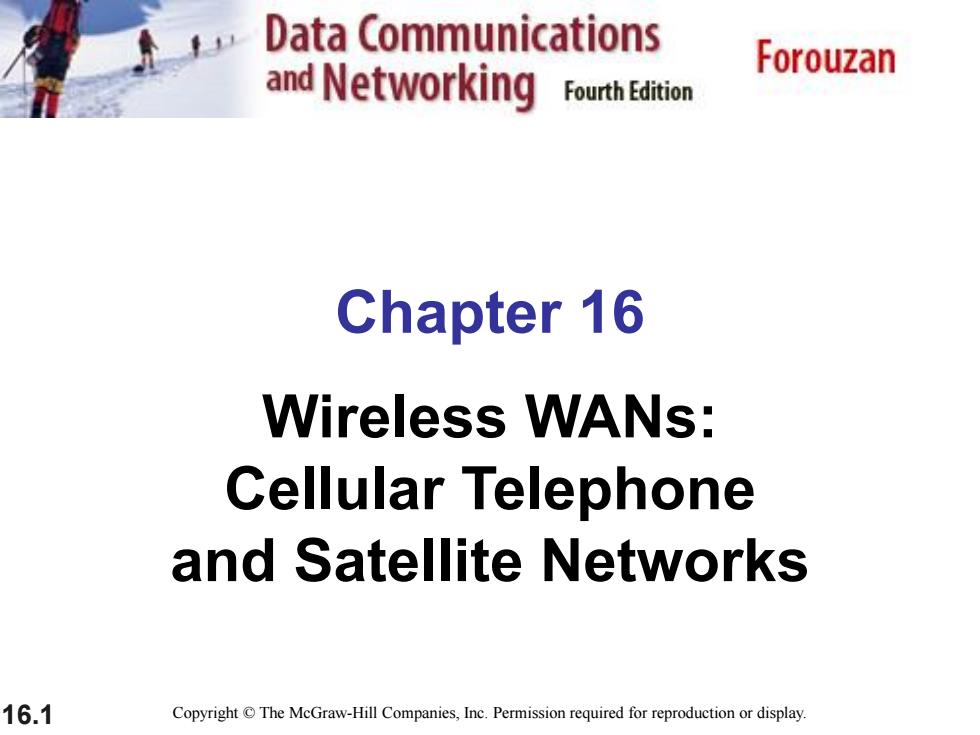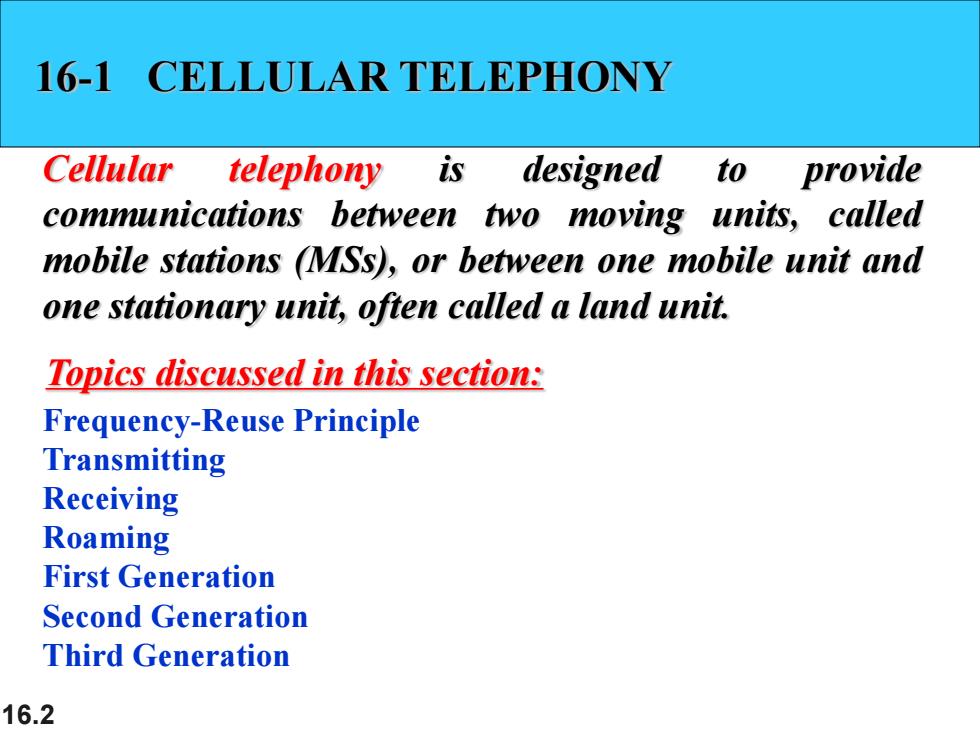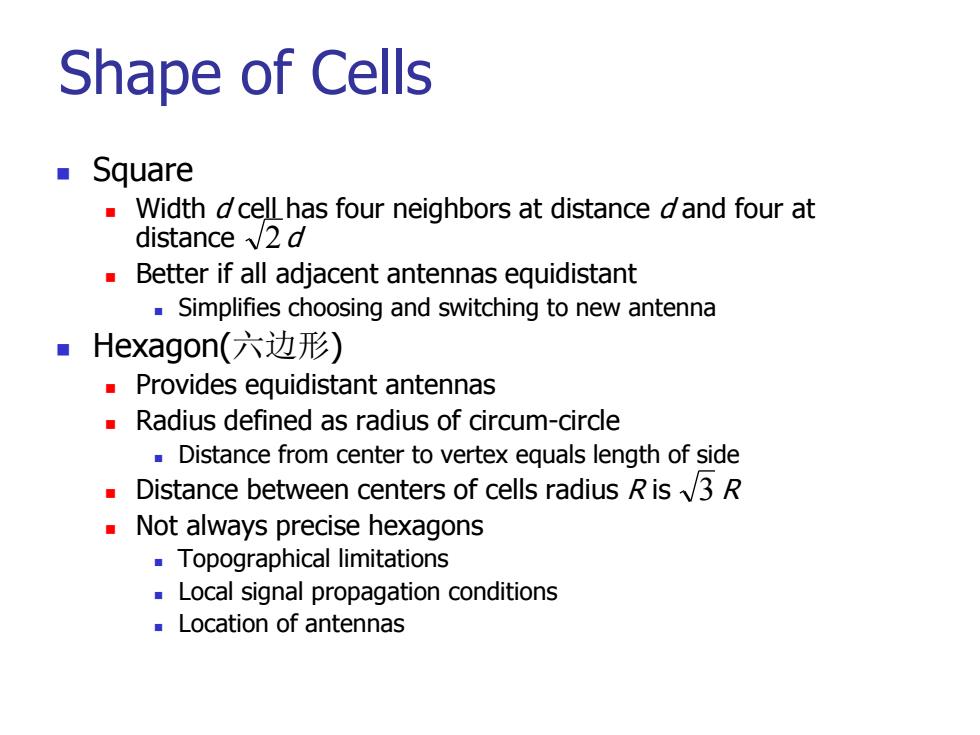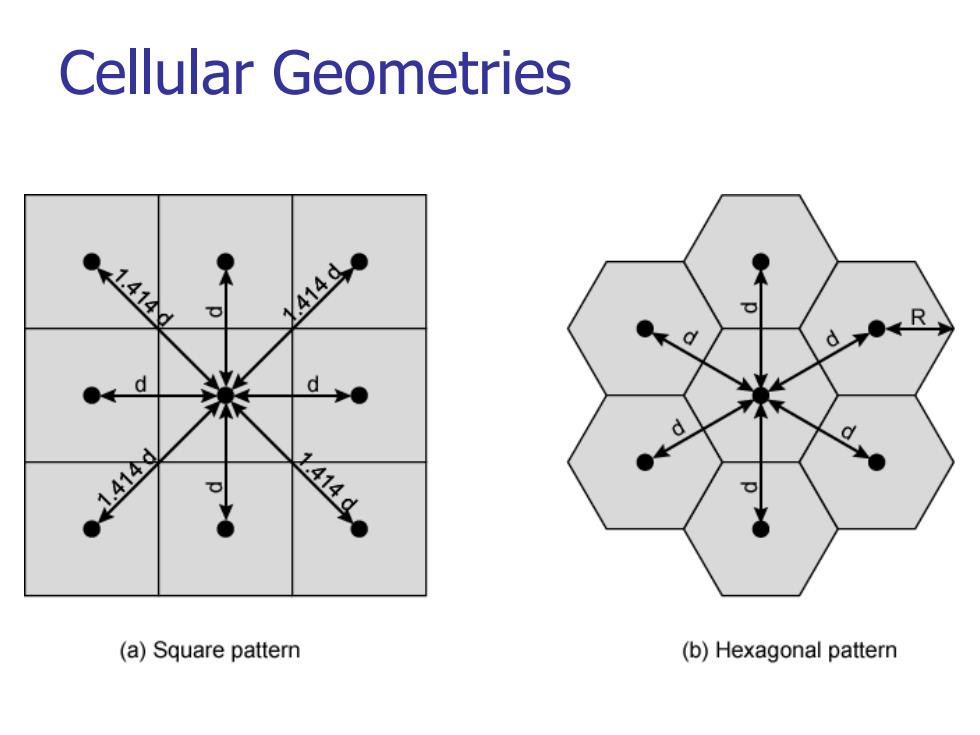
Data Communications and Networking Forouzan Fourth Edition Chapter 16 Wireless WANs: Cellular Telephone and Satellite Networks 16.1 CopyrightThe McGraw-Hill Companies,Inc.Permission required for reproduction or display
16.1 Chapter 16 Wireless WANs: Cellular Telephone and Satellite Networks Copyright © The McGraw-Hill Companies, Inc. Permission required for reproduction or display

16-1 CELLULAR TELEPHONY Cellular telephony is designed to provide communications between two moving units,called mobile stations (MSs),or between one mobile unit and one stationary unit,often called a land unit. Topics discussed in this section: Frequency-Reuse Principle Transmitting Receiving Roaming First Generation Second Generation Third Generation 16.2
16.2 16-1 CELLULAR TELEPHONY Cellular telephony is designed to provide communications between two moving units, called mobile stations (MSs), or between one mobile unit and one stationary unit, often called a land unit. Frequency-Reuse Principle Transmitting Receiving Roaming First Generation Second Generation Third Generation Topics discussed in this section:

Figure 16.1 Cellular system Mobile switching center (MSC) BS MS Public switched Cell telephone network Stationary (PSTN) phone 16.3
16.3 Figure 16.1 Cellular system

Shape of Cells Square Width dcellhas four neighbors at distance dand four at distance√2d Better if all adjacent antennas equidistant Simplifies choosing and switching to new antenna ■Hexagon(六边形) Provides equidistant antennas Radius defined as radius of circum-circle Distance from center to vertex equals length of side Distance between centers of cells radius R is 3 R Not always precise hexagons Topographical limitations Local signal propagation conditions ■Location of antennas
Shape of Cells Square Width d cell has four neighbors at distance d and four at distance d Better if all adjacent antennas equidistant Simplifies choosing and switching to new antenna Hexagon(六边形) Provides equidistant antennas Radius defined as radius of circum-circle Distance from center to vertex equals length of side Distance between centers of cells radius R is R Not always precise hexagons Topographical limitations Local signal propagation conditions Location of antennas 2 3

Cellular Geometries 414④d 414 (a)Square pattern (b)Hexagonal pattern
Cellular Geometries